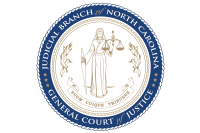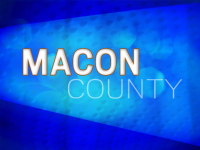Haywood Schools assess benevolent policy toward club sports
 A proposal to charge youth sports clubs and outside groups rental fees to use school property is being studied by the Haywood County School Board.
A proposal to charge youth sports clubs and outside groups rental fees to use school property is being studied by the Haywood County School Board.
Dozens of sports teams in the county use school-owned and maintained ball fields and gyms for practice and games — from youth cheerleading groups to club soccer. For the most part, it’s free, even for outside groups not affiliated with the schools.
“It doesn’t cost them anything, or it costs them very little depending on what they have worked out,” said Jim Francis, a Haywood school board member.
But whether it’s the cost of electricity or salary for after-hours custodians, “the school is footing the bill,” Francis said.
Most groups that use facilities regularly pitch in toward upkeep — whether it’s buying bags of fertilizer, striping and mowing the fields or helping fix up concession stands. But it is largely up to the principal of each school to work out the specific arrangements. And therein lies the problem.
Related Items
“We want to try to make it fair for everyone. If we are charging one fee at this field, and another fee at that field, then it isn’t fair to anybody,” said Francis, who sits on the school board policy committee.
Who gets to use school property when is also up to the discretion of each school, and the scheduling can get both complicated and political given the number of teams and clubs vying for space.
The school board is undertaking a prolonged study to assess whether the piecemeal approach should be replaced with a more formal policy. The goal is to ensure equal access and fair treatment for all clubs and organizations, said Assistant Superintendent Bill Nolte.
As it stands now, the school system could be vulnerable to accusations of preferential treatment if it charges some groups and not others, or provides space to this team but not that team, Nolte said.
The rental fees would also apply to outside youth clubs that meet after school on school property — from Boy Scoot troops to Bible clubs.
“The whole spirit is to treat everybody fairly and charge everybody something whatever that number might be,” said Mark Sheppard, Haywood County Schools support services director. “We are not looking to put any youth leagues out of business or put an undue burden on anybody.”
Tackling school facility use has proved a monumental undertaking fraught with pushback from youth sports clubs, however, who don’t want to incur additional costs for using fields — costs that would in turn have to be passed on to the players and their families.
The Haywood County School Board last month decided to table the policy change indefinitely.
“We are backing up and punting just a little bit on it. We want to look at how it would affect the various youth groups in the county,” Sheppard said.
Rather than implementing the new policy anytime soon, the school system will be in “research mode” this year, Sheppard said.
“We are asking all the principals to study and look at all the contracts they are entering into and how the new rules would affect these different entities,” Sheppard said.
That means keeping a record of every outside group that asks to use school facilities, how often, for how long and under what conditions.
The current system has been in place for decades, likely dating back to a time when youth sports and clubs were not nearly as prolific as today, Nolte said. In a period of diminishing school funding, the school board decided it’s time to assess this long-standing practice. But it is treading gingerly.
“I do concur we need to move slowly and wisely,” Nolte told school board members at a recent meeting. “We have lots of facility use contracts, and it will be a big change for the community. It might take some time to work through this policy.”
There’s also a philosophical conundrum: should schools pick up the tab when outside groups use the facilities?
“You turn the lights on; turn the heat on; you put toilet paper out; you clean,” Nolte said.
If the school system doesn’t pass on those costs, it ends up subsidizing the use of school facilities by private organizations, albeit for a great cause like youth athletics.
Hallowed ground
Youth sports groups have asked the school board to consider the positive role of club sports in children’s lives before enacting rental fees.
“We need a place for these children to play that is safe, where their parents and children feel secure, that is located in their community,” said Davis Swaim, a volunteer coach and representative with American Youth Soccer Organization (AYSO).
More than 200 groups use school facilities in Haywood County in a given year.
Some are nonprofit civic or community groups — like the Haywood County Cattlemen’s Association annual beef cook-off at Tuscola High cafeteria, the Haywood Democratic Party’s annual picnic at Pisgah High’s football field, or the Toys for Tots motorcycle ride that uses the Pisgah High parking lot as a staging area.
But sports groups — and in particular sports groups wanting field time — comprise the lion’s share of outside groups using school facilities.
“We can practice anywhere that is flat, but there is not a whole lot of flat ground in Haywood County,” said Swaim, who spoke at a recent school board meeting when the draft policy was first presented.
“I am not opposed to paying a reasonable fee to help cover costs, but all we are asking for is field space. We don’t need access to the building; we don’t need custodians on hand,” Swaim said.
Swaim fears AYSO would have to raise the $75 participation fee for players if teams have to pay for their field time.
Other youth sports organizers in the county share that concern.
For the Lake Junaluska Warriors youth football team, it’s only $60 to participate for the season, which includes a uniform. But even that is a struggle for some families, according to Derrick Penland, one of the volunteer organizers for the Warriors.
“Some parents can’t come up with the money for even that and so we have a scholarship fund,” Penland said.
If the team was hit with a field rental fee and had to pass it along to players, “that could cause some kids not to be able to play youth football,” he said.
The Lake Junaluska Warriors have a particularly unique agreement. Their football teams and cheer team practice and play games on the otherwise unused field at Haywood Central High School, an alternative high school in Clyde.
The parents of players do all the mowing, all the cleaning and all the field maintenance. The electric bill for the stadium lights and concession stand even comes straight to the team.
On top of that, the team built new bleachers and brand-new bathrooms on the field.
“We paid for that out of our own pocket through fund-raisers to give back,” Penland said.
When they took on the investment, they assumed they would continue to reap the benefits of free field use. It would be disappointing to make an in-kind contribution of that magnitude only to end up being charged a fee, Penland said.
The quid-pro-quo of sports teams helping take care of fields or build a new dugout is mutually beneficial. Sports parents can donate their labor instead of money. And the school system still gets what it wants — namely something in return for the wear and tear to the facilities by outside groups.
But these are sometimes handshake agreements. Even if the schools calculated and recorded the dollar value of the donated labor, it is not a legally advisable practice, Nolte said.
“We have been told the trade business is pretty questionable, and if we do it, we had better be clearly documented,” Nolte said.
What’s fair?
If the school board ultimately decides to charge club sports teams and outside groups to use school facilities, the next question is “how much?”
Fairly early in the process, everyone agreed the goal isn’t to make money — but merely to recoup the schools’ actual costs for the facility use.
“We are trying to base it on what exactly is it costing the school,” Francis said.
The policy committee and school officials drilled down on those costs to the penny, from the hourly salary to have a custodian on-site after-hours to the kilowatts of electricity the lights in a school gym burn per hour.
“Is a custodian needed? Is heat or cooling needed? Is the group using lights in one room or lights in the football stadium? Or, no lights at all, like for soccer practice on an unlit field?” Nolte said, citing the various machinations considered when formulating reasonable rental fees.
Despite the inordinate detail — gym use in winter is more than in summer for example since heat is required — the school system is quick to call the draft fee schedule a starting point for discussion purposes only.
While still a work in progress, the draft fee schedule would charge $5 an hour for the use of a school gym, plus another $2 an hour for lights and another $18 an hour if it’s winter and must be heated. A school auditorium would cost $25 an hour plus another $20.18 an hour to pay the salary of an after-hours custodian.
Use of a field or stadium without lights would be $10, but with lights would run another $11.88 to $35 an hour depending on which field or stadium.
The basic field fee of $10 an hour if no lights or concessions are involved doesn’t seem like a lot on the surface, but it would quickly add up for groups that use school fields two, three and even four times a week.
“There is going to be some groups that would struggle a little bit,” Francis said.
Another issue on the table is whether to allow facility use by for-profit entities.
“There are lots of for-profits that ask all the time about renting facilities, and right now, we have to say we cannot do that,” Nolte said.
That could change if a new policy is adopted. The draft policy would allow for-profits to use school facilities at a rate that’s three times what nonprofit, all-volunteer youth related programs would pay. Theoretically, the policy change could open up school auditoriums to a year-end recital by private dance academies or school gyms for a karate tournament put on by a private studio.
“As long as they were willing to pay the price, they could,” Sheppard said.
Nolte said it could be a win-win for the schools and the organizations.
“Anything we can do to help the local economy helps all of us,” Nolte said. “As long as we aren’t subsidizing the groups, as long as people are paying for what they use and sharing what they make.”
But the schools aren’t expecting a windfall.
“If you charge them too much, they aren’t going to come,” Nolte said.













